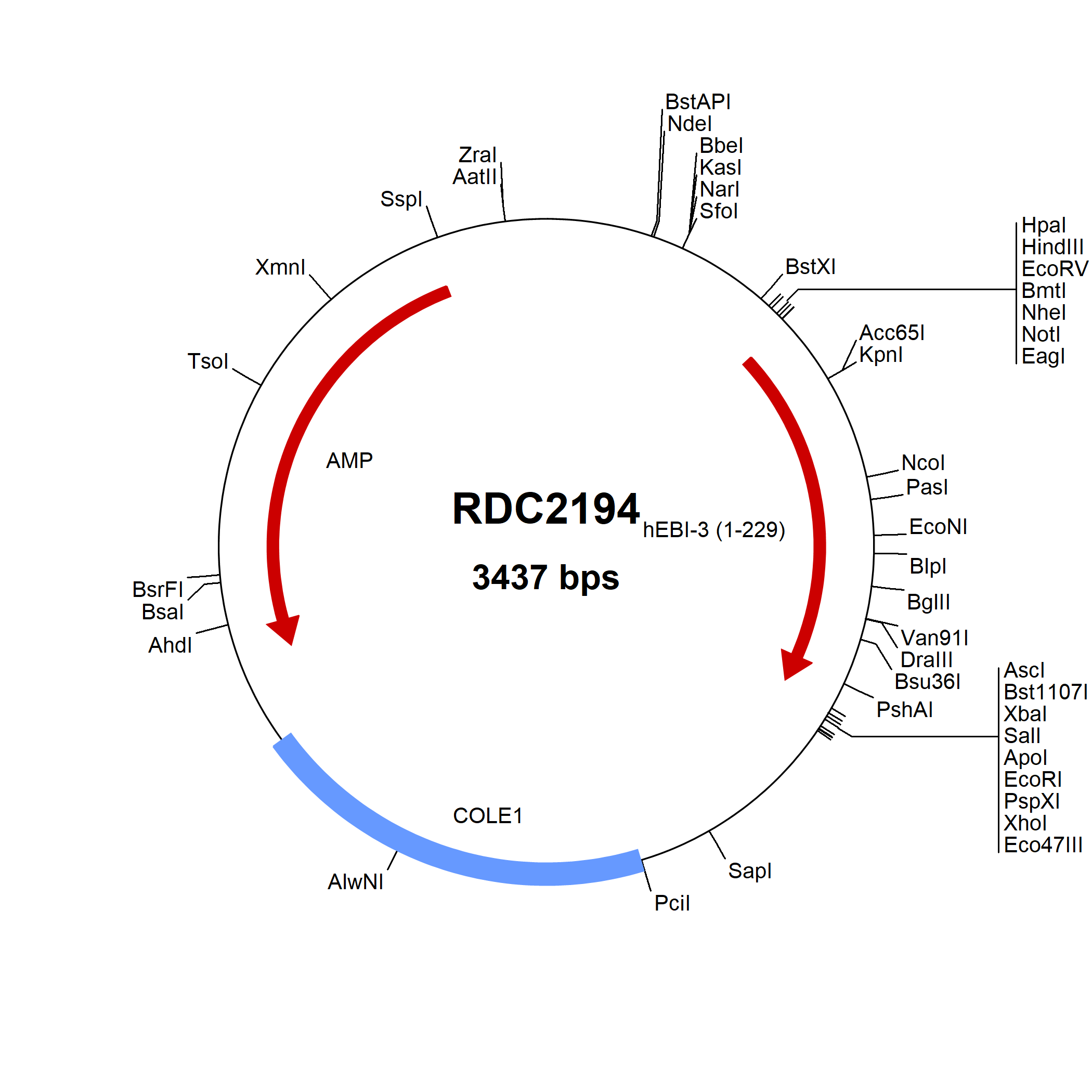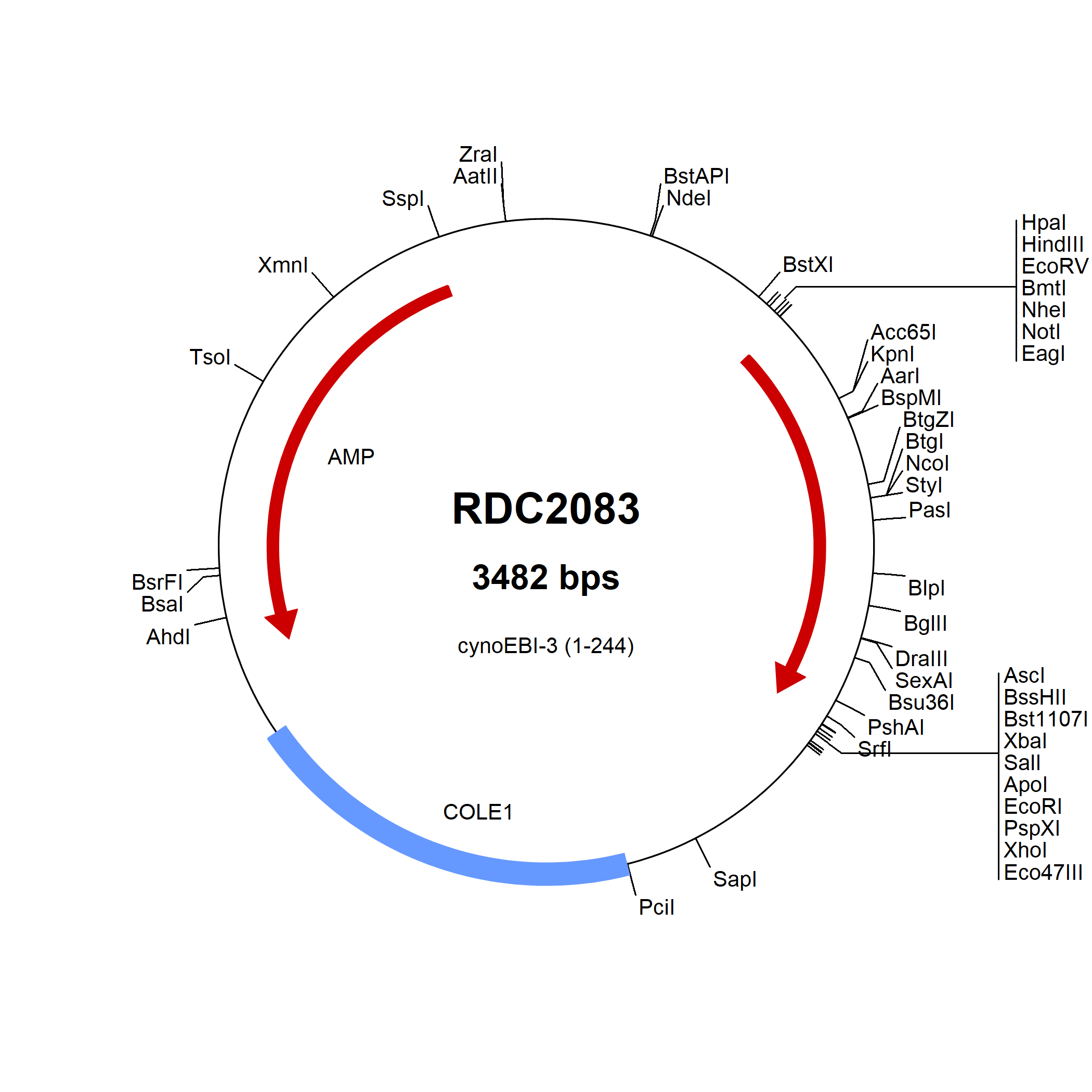EBI3: cDNA Clones
Interleukin-27 (IL-27) is a heterodimeric group 2 receptor ligand molecule that belongs to the IL-6/IL-12 family of long type I cytokines. It is composed of EBI3 (EBV-induced gene 3), a ...
2 results for "EBI3 cDNA Clones" in Products
2 results for "EBI3 cDNA Clones" in Products
EBI3: cDNA Clones
Interleukin-27 (IL-27) is a heterodimeric group 2 receptor ligand molecule that belongs to the IL-6/IL-12 family of long type I cytokines. It is composed of EBI3 (EBV-induced gene 3), a ...


